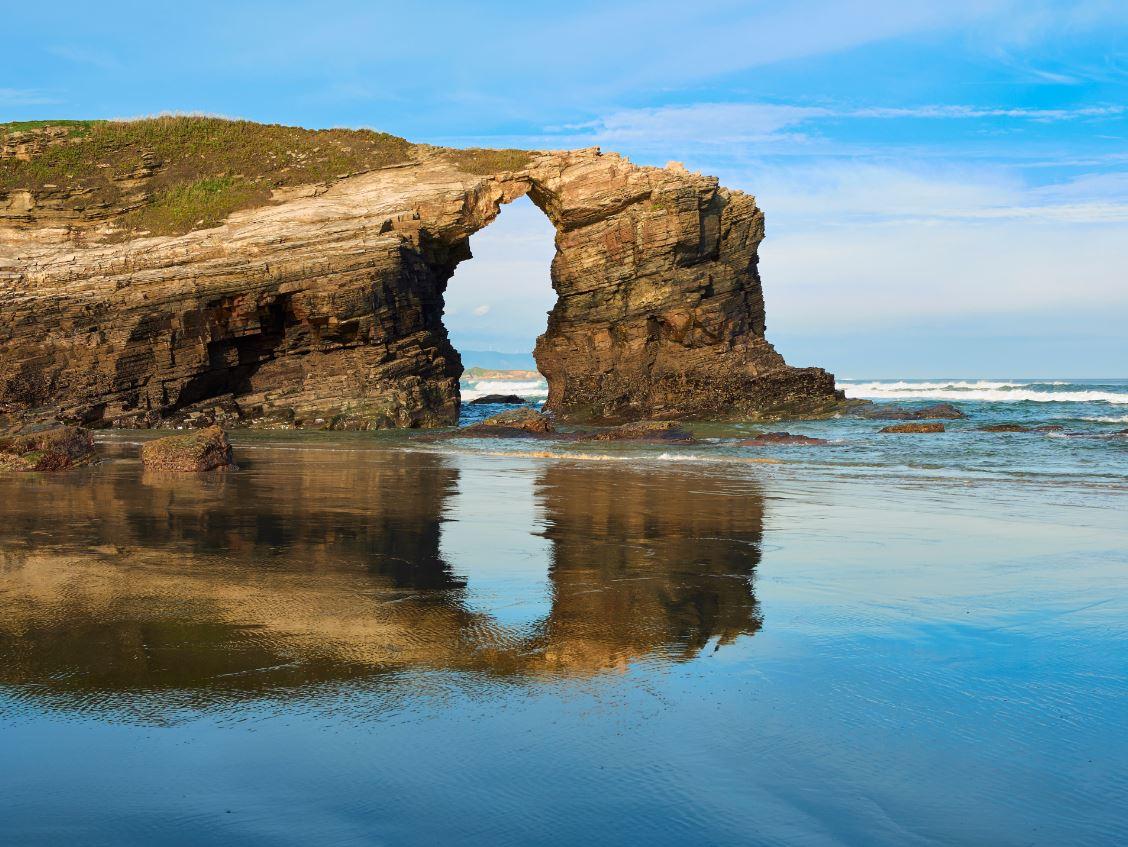Galicia
Located in the far northwest of Spain, Galicia is a paradise for hikers, nature lovers, anglers, surfers and other water sports enthusiasts. The mild and rainy climate makes this region much greener than the rest of Spain and you will not experience a heat wave in the summer. You can enjoy pleasant temperatures and also during autumn, when the traditional wine 'Albariño' is harvested, it is a pleasant place to be. This road trip starts in Vigo, Galicia's biggest city, and takes you along the coastline to beach at Praia Das Catedrais or the beach of the cathedrals. You drive through hilly green landscapes, past romantic vineyards, beautiful bays and bustling towns on the Atlantic coast. Ideal to cover by campervan, car or motorbike.
Total distance of the route: 633 km
Ría de Vigo
Galicia's coastline is carved by an enormous number of rias, each one dotted with small islands. These wide coves, through which the sea penetrates the land, are reminiscent of fjords. Along the southernmost coast of the region are four beautiful rias, which are also the first four stops of our road trip. Each of the coves is characterised by a combination of natural beauty, excellent wines, idyllic towns and endless white beaches. We start at Ría de Vigo, the smallest inlet of the four. The cultural highlight along this ría is the town of Vigo. Vigo is not only the largest city in Galicia, but also the largest fishing port in Europe. You can go for a beautiful walk in the old picturesque town centre, through the gardens of Parque Castrelo or between the artistic sculptures in the modern city centre. If you want spectacular views of Vigo, a short trip to Monte do Castro is not to be missed. During the summer months, you can also take a boat from the city to the beautiful Cíes Islands, part of the Atlantic Islands National Park. You can laze around by the sea or walk on the famous dream beaches Praia do Rodas and Praia do Figueiras.
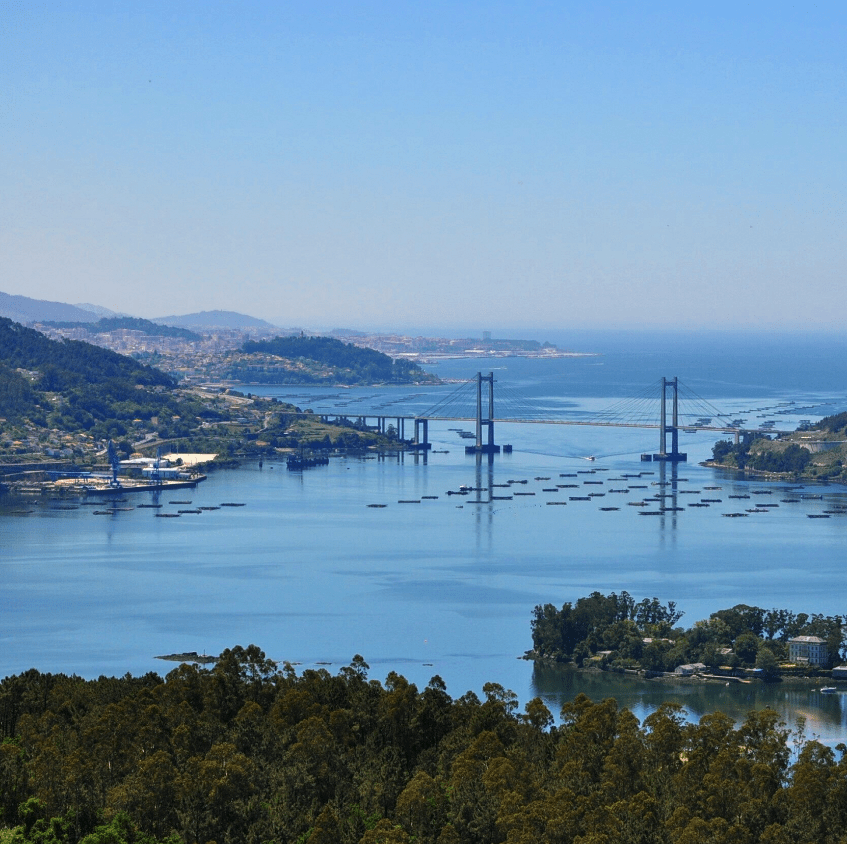
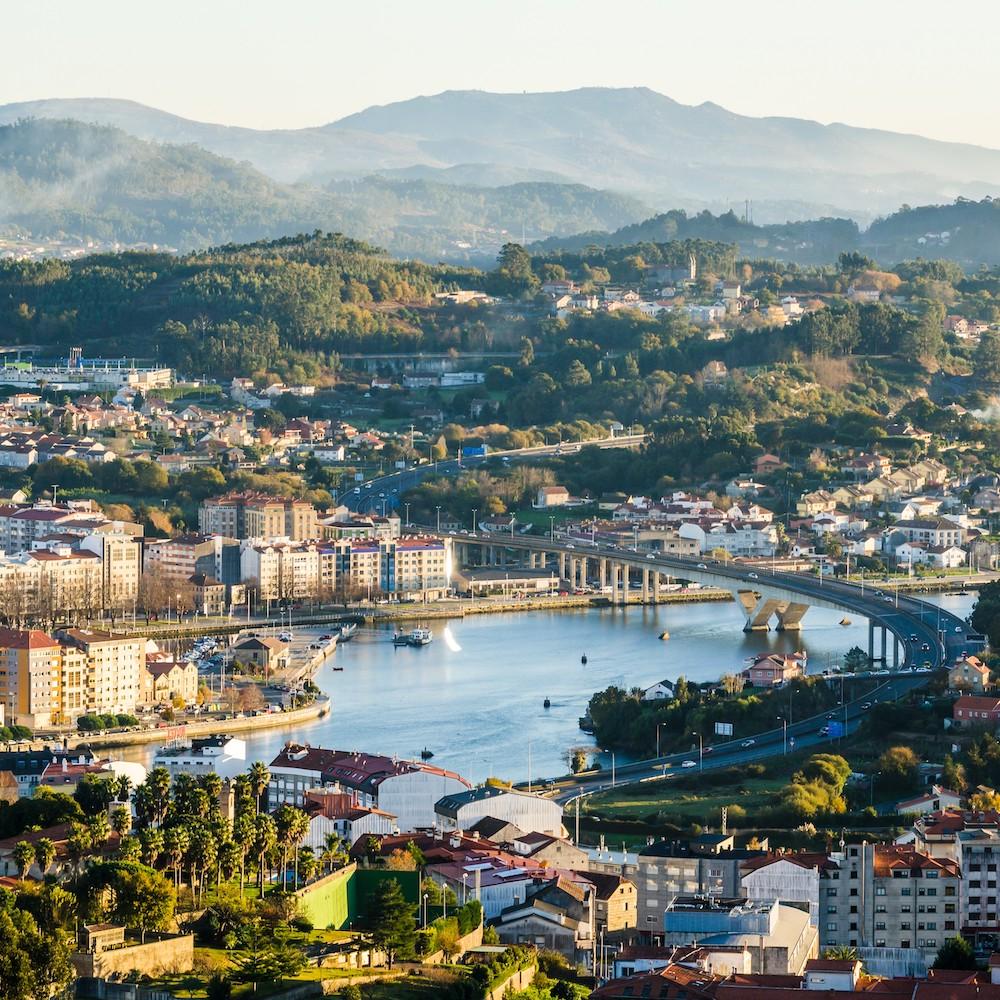
Ría de Pontevedra
Driving towards Pontevedra, we cross a beautiful hilly landscape with numerous vineyards. Pontevedra is a bustling port with a small historical centre consisting of numerous galleries, cosy squares and restaurants. There are hardly any cars left in the city, so it is best to park outside the centre. While walking you can enjoy the beautiful buildings from the Renaissance, Baroque and Gothic periods. Not far from Pontevedra is Combarro, a small and authentic port town where time has stood still. You will find typical stone houses and some well-preserved hórreos or typical granaries that are among the most picturesque in Galicia. On our way to the next inlet, 'Ría de Arousa', we briefly pass by A Lanzada, the most famous beach on the southern coast. This semi-circular white beach, no less than seven kilometres long, is a very popular spot for divers and a paradise for surfers.
Ría de Arousa
The Arousa estuary is the widest and largest in Galicia and the one with the most islands. Cambados, the origin of Albariño, Galicia's famous white wine, is located in this ría. The historic town was crowned European wine capital in 2017. In the wine museum, you can learn everything about the history of winemaking. In addition, this ría is also the largest mussel farm in Galicia. When the sea recedes and the tide goes out, mainly women go to the beach to gather the seafood. An early walk along the promenade will allow you to see the shellfish gatherers at work. After visiting this town, we continue to Illa de Arosa, which is connected to the countryside by a long bridge. On the island, you can visit the Punta Cabalo lighthouse, the Carreirón Nature Reserve and the traditional port of Puerto de Xufre. About twenty minutes from the island, we also stop off in Vilagarcía de Arousa, an important commercial and fishing port where you can easily spend a day wandering around the modern town centre and harbour.

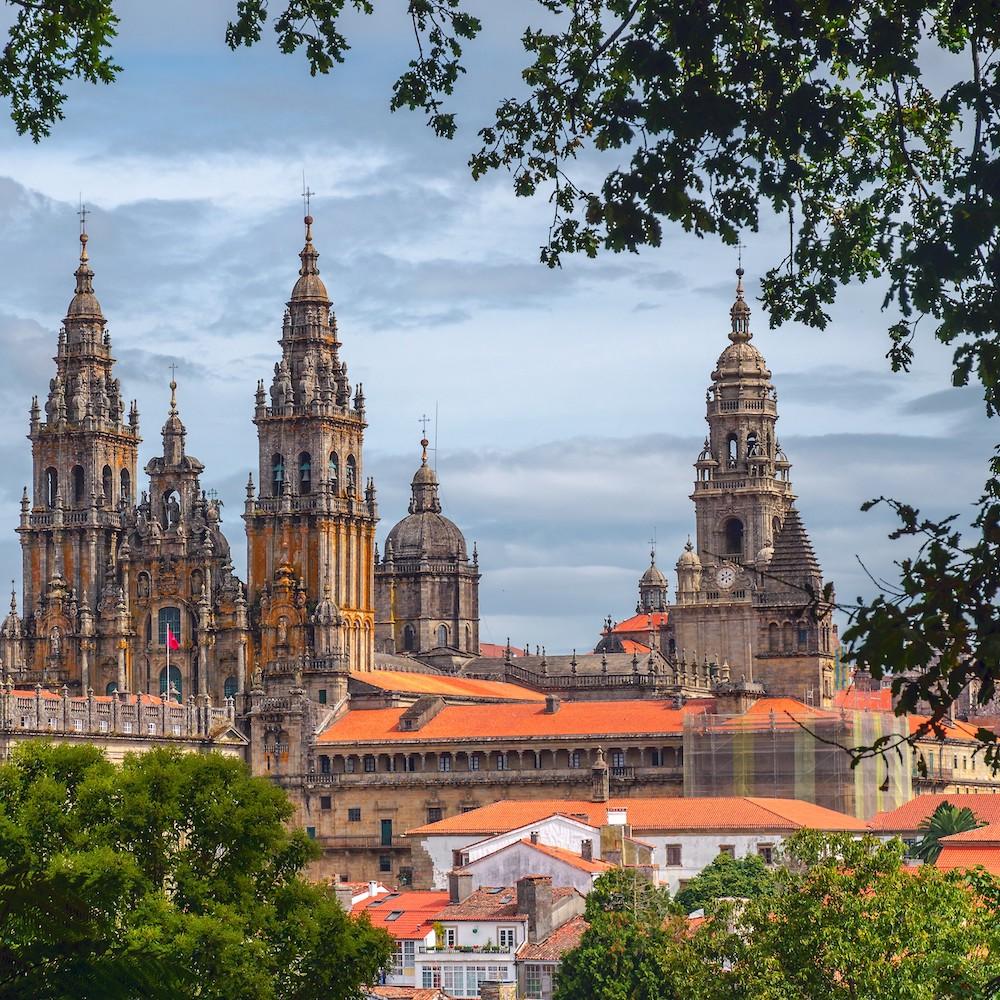
Ría de Muros e Noia
Before we continue along the Ría de Muros e Noia, we drive towards Santiago de Compostella. This famous city is a must on any road trip in Galicia. It is not only the capital of the region, but also a place of pilgrimage that attracts pilgrims from all over Europe every year. In the city there are several places of interest such as the cathedral, el Hostal de los Reyes Católicos, El Palacio de Rajoy, el Colegio de San Jerónimo, San Martín Pinario and Fuente de los Caballos. After a visit to Santiago de Compostella, we head back to the coast. Via the ancient village of Noia we reach Muros, a port town with characteristic granite houses at the foot of Mount Louro. Both Noia and Muros are particularly beautiful places to walk. Via Praia de Carnota, one of the most magnificent and longest sandy beaches in Galicia, we drive to our next stop.
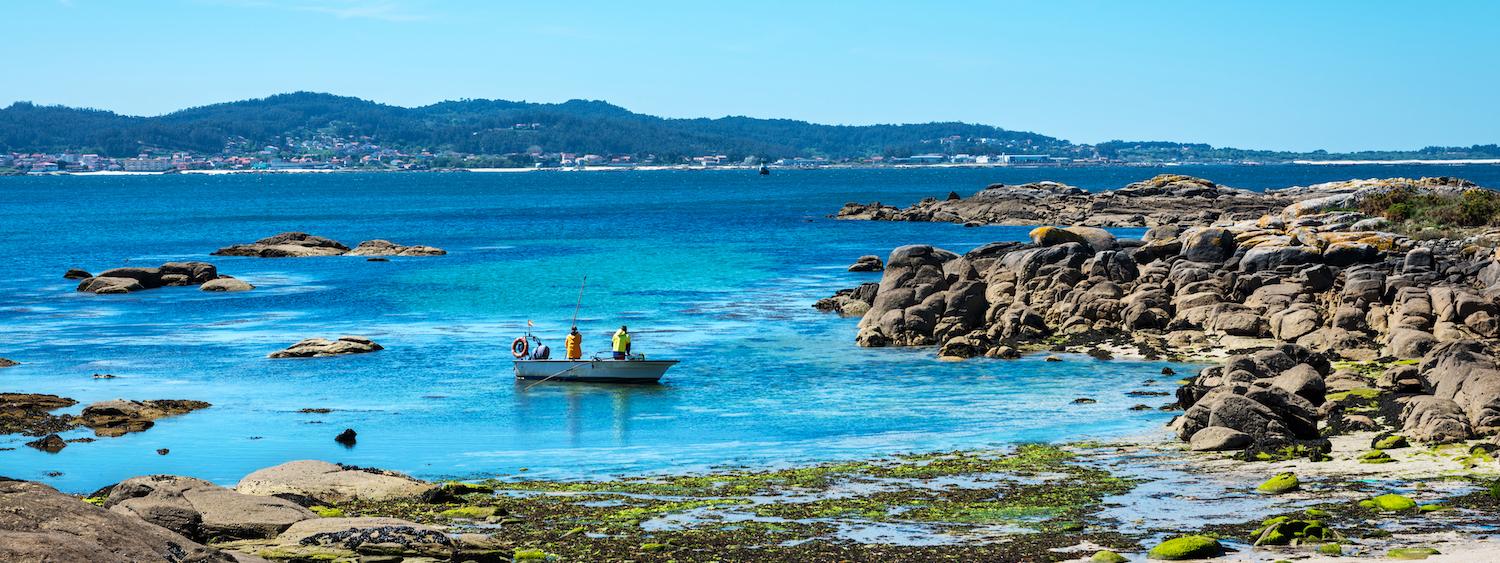
Fisterra
Finisterre, in Gallic Fisterra, is the final point of our visit to the four rias on the south coast. The village and the cape of the same name were named by the Romans after the end of the world because it is one of the most western points of the Spanish mainland. Fisterra is not only worthwhile for pilgrims, but also for ordinary tourists. You can stroll through the pretty village and walk on the beach or in the dunes, but what really matters is the lighthouse on the rocky promontory. The walk from the village to the cape is worthwhile and when you get to the top you have a fantastic view of the mighty ocean. If you have time, it is best to go to the cape in the evening. At Cape Fisterra, due to its western location, you can enjoy the most beautiful sunset you have ever seen.
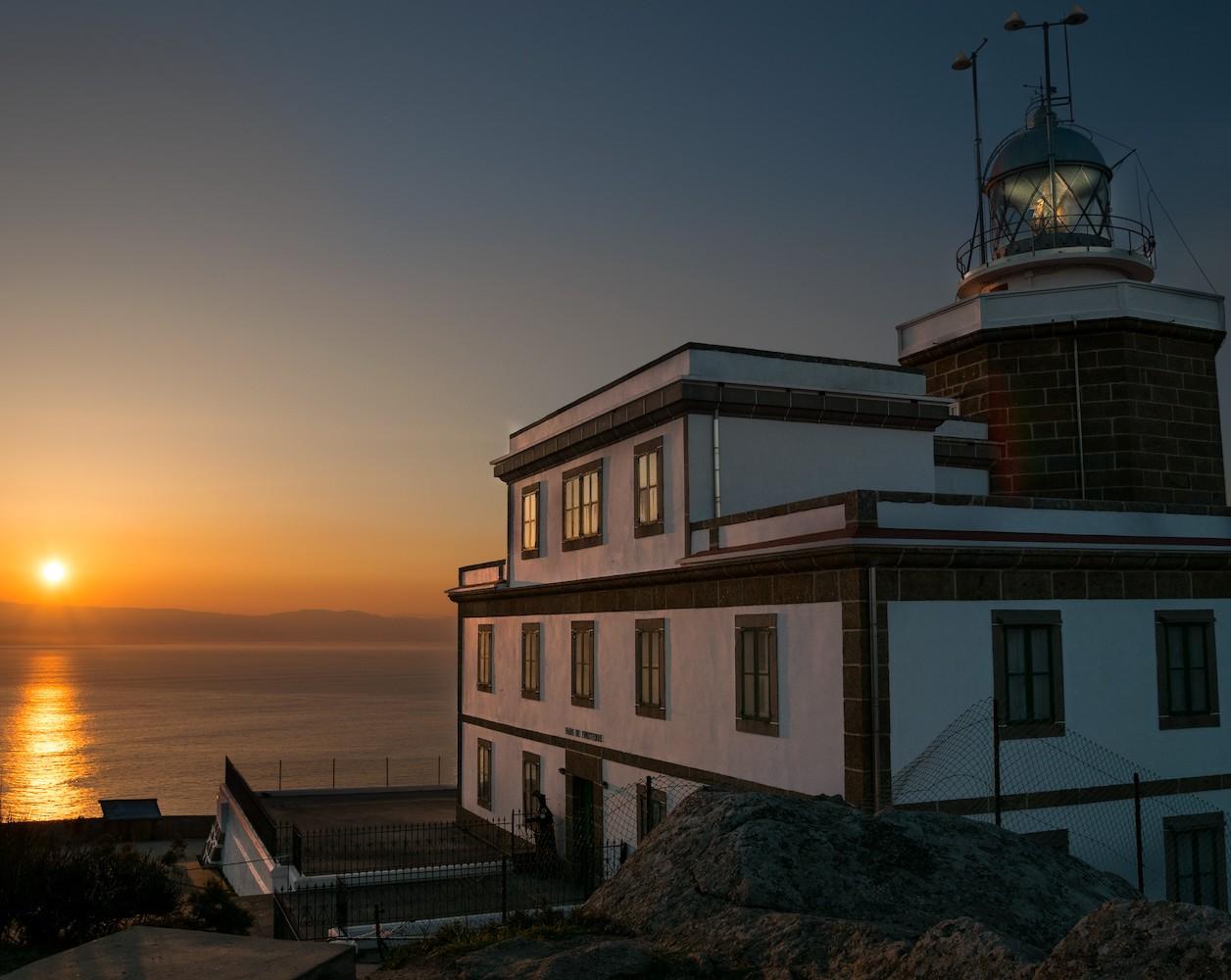
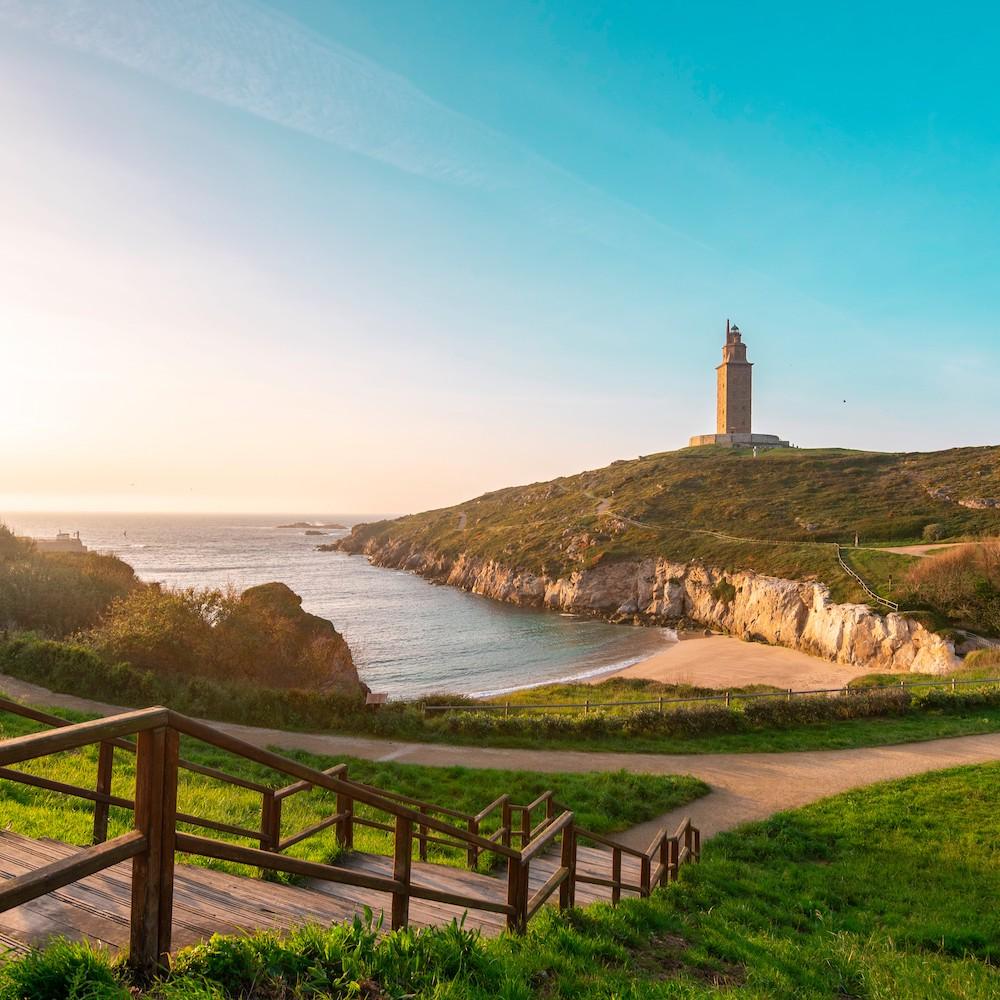
A Coruña
From Fisterra you can decide to continue along the coast to A Coruña or take the shortest route via the villages of Vimianzo and Carballo. A Coruña is perfect for a weekend or a one-day visit. You can relax on Riazor beach and stroll through the city. Soon you will see the Hercules lighthouse proudly rising on the coast. The sea is very rough here, which makes for an impressive spectacle as the waves crash against the lighthouse. The city itself also invites you to take a trip. You can visit the old Iglesia de Santiago or stroll along the Praza María Pita. On a rainy day, you can visit one of the many museums. From the Science Museum and the Archaeological Museum to the Sea Aquarium where you will find the replica of Captain Nemo's submarine from Jules Verne's novel. There is something for everyone. The centre of Coruña is very busy in the summer, so it is better to spend the night with your campervan in Puerto de San Pedro de Visma, the southernmost part of the city. It is also ideal for cycling along the Paseo Marítimo.
Fragas do Eume
The next stop is Fragas do Eume Natural Park, one of the best-preserved Atlantic riverine forests in Europe. The best way to discover the shady park is on foot. The many footpaths are clearly marked and provide a wonderful moment of rest. Hidden in the heart of the forest is the ancient monastery of Caaveiro, from where you have an extraordinary view of the magical forest. Passing the city of Ferrol, we let ourselves be carried away to Porto de Bares. On the way, in the coastal town of Valdoviño, you can spend the night on the white sandy beach between the rocks.

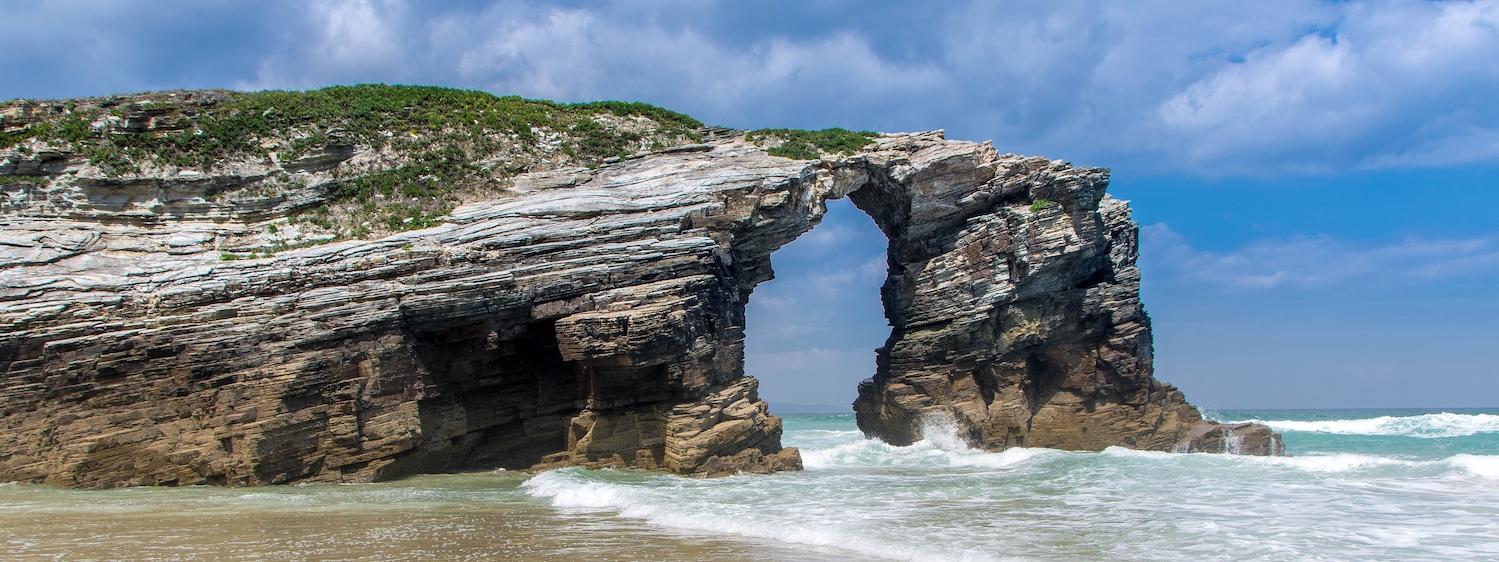
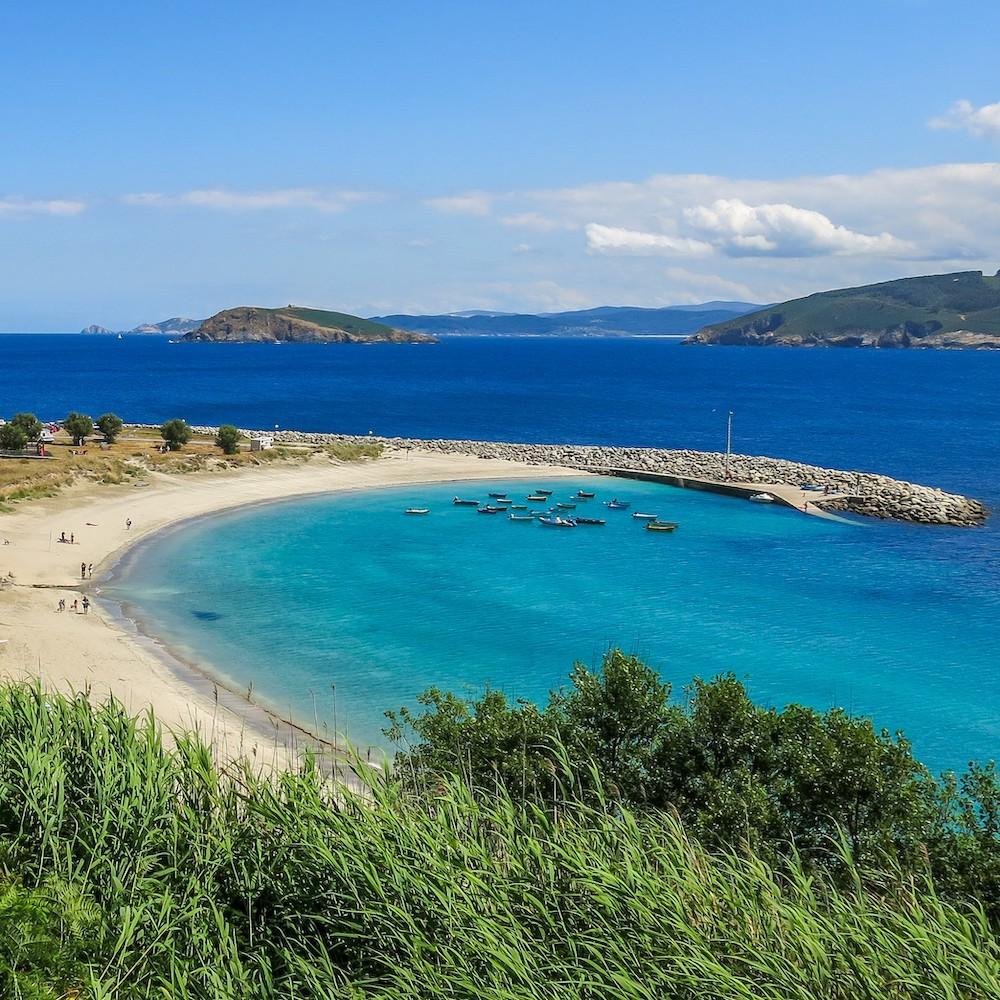
Porto de Bares
From Fragas do Eume Nature Park, we first pass through Ferrol before heading to Porto de Bares. In Ferrol, following the promenade, you arrive in Magdalena, a district in Neoclassical style, complemented by modern elements. Another nice neighbourhood in this town is Canido where almost every wall has a mural by local and international artists, including Banksy. From Ferrol we go to the peninsula Porto de Bares, the most northern point of Galicia. You can take a short walk along the beach or in the cosy village. Famous here is the natural wonder Coído de Bares, an inlet formed by stones rounded off by the sea.
Praia das Catedrais
The last stop on this road trip is Praia das Catedrais, the most beautiful beach in North-West Spain. Magnificent rock formations form large arches and openings that make this beach truly spectacular. It is also reminiscent of a cathedral, hence the name 'the beach of the cathedrals'. You can visit Praia das Catedrais from the beach or from the cliffs. Please note that the beach is only open at low tide and you can only walk through the rock formations then. Especially when the evening sun casts a faint light over the rocks, this is a very special experience. Although you are not allowed to swim in the sea, you can easily spend a few days here. In short, this really is the ideal end to a road trip along the coast of Galicia.
